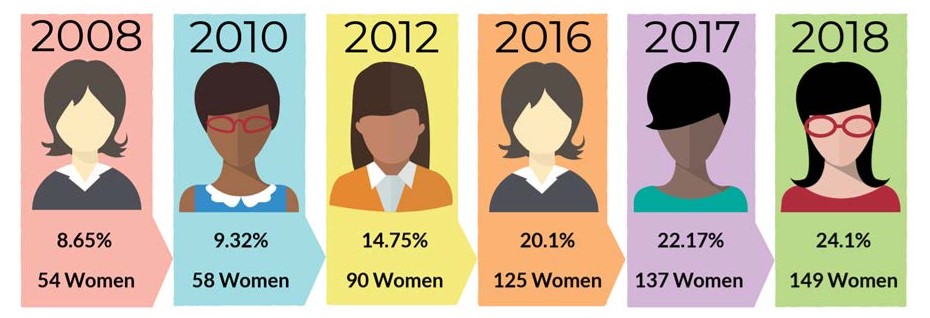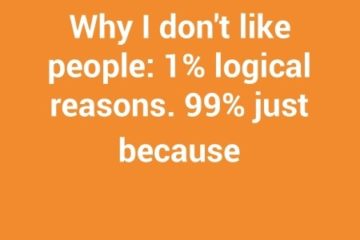If inclusion is the right thing to do, how do we create inclusive work cultures?
Challenges at work and in our personal lives are forcing us to decide on what is the right thing to do. In those situations, having good values and principles are helping us to make the right decisions. Being guided by values means that we know exactly WHY we are doing something and not something else. Being guided by values also means that we are in sync with ourselves and by doing so we are staying passionate and motivated about the things we do. When businesses are guided by values, they develop their backbone for a strong brand and reputation which in today’s world is the recipe of long-term success.
On the other hand, when we are focusing on “doing things right”, we are assuming that we already know what the right things are and just aim to do them better, faster, or with a higher margin. In that case, businesses are tinkering around their established products, services and customers to stay competitive. When it comes to inclusion, businesses are often tinkering around their employee value proposition without making major changes and expect inclusion to happen!
“Doing the right things” is more future focused and often based on ethical considerations while “doing things right” is usually about efficiencies. In business we need both so that we don’t end up doing the wrong things very well or inefficiently doing the right things.
The Starbucks example

In 2018, Starbucks was closing all locations across the US for employees to attend a racial-bias training after footage of the arrest of two black men who tried to use the bathroom in a Philadelphia Starbucks went viral, sparking boycott threats. Nearly 175,000 Starbucks employees participated in the training, which covered issues such as “implicit bias” and “conscious inclusion.” Costly? Necessary? Values driven? Long-term gains? Safeguarding the Starbucks brand, reputation and future customers? Yes, all of the above.
- When was the last time we asked what the right things are for us at work or personally?
- What assumptions did we make when we answered this question?
- What was the context for determining the right things back then, what is it now, and what does the future hold for us?
- Do we usually favour reducing short term losses over long term gains?
Tinkering around the edges is not enough
In our VUCA world (volatility, uncertainty, complexity, and ambiguity), tinkering around the edges may not be enough to stay successful in future. Yet, many businesses don’t have the courage for bigger changes, and the strong focus on upholding the status quo makes them inflexible. When we are not adaptable, we miss out on opportunities. As a result of focusing on the wrong things, people are pressured or feel pressured to do more (unfortunately, of the wrong things). The constant pressure and lack of success (from focusing on the wrong things) is wearing people out. People get stressed and lose motivation which impacts their health, productivity, innovation, and human connections with colleagues and customers. Stress often translates to people being short tempered, snappy, intolerant and not inclusive.
Do we focus on the right things for our people at work?
Great businesses are trying to establish a diverse workforce with an inclusive work culture. The business case for that is often summed up by saying that this is the right thing to do (ethical reason) and that it makes business sense to do (securing long-term financial success). Nice! We are clear about the right thing to do. We established the WHY. What about the execution of Diversity & Inclusion. How do we create inclusive work cultures?
Inclusion is not something we do a couple of times a day like drinking a coffee or having a meeting with someone. All employees have a choice at any time of the day to work in an inclusive way or not. Similar to choosing our attitude towards work and the people we work with, we can choose to be inclusive or not. In that sense, any process, policy and any people interaction can be an expression of inclusion or lack of inclusion.
The way we are going to work and collaborate with others in future requires bigger changes than tinkering with leadership styles, organisation structures and historic inequalities. It’s time to get bold and ready for the future. Many companies are restraining their progress towards a more inclusive working culture in the hope that they can adjust their traditional systems and processes to make them suit. While this can be done for some of them, for others it would be a waste of time. Tinkering around the edges of current unsuitable processes instead of creatively reinventing them is slowing down the progress towards a truly inclusive work environment.
The slow road to inclusion
Let’s take the representation of women on boards as an example which in my view is a result of too much tinkering and not enough bold moves. According to the paper ‘New Zealand Census of Women on Boards 2018’ (Catriona MacLennan, Professor Judy McGregor and Shamubeel Eaqub), less than one in four members of the boards of New Zealand’s top 100 companies by market capitalisation is female. The figure has crept up to 24.1% of board members being female. This means that New Zealand has yet to reach even a quarter of women in governance of the top listed companies. (source: New Zealand census of women on boards 2018)

How to create inclusive work cultures?
Any organisation process that involves a high level of people interaction is an opportunity to be more inclusive. The process around the annual performance appraisals is one of those opportunities and one that requires a bold move away from the status quo. Performance is important and needs to be talked about, it just really matters HOW we have those conversations. The Diversity Institute identified performance appraisals as one of the key organisation processes that can negatively impact on relationships and subsequently on motivation, productivity and innovation. Why? Appraisals are highly subjective and prone to bias and unconscious bias. Almost with certainty, the 2 people involved have different perceptions and make different conclusions. These inherent disagreements require skills in resolving differences.
- Why would the team member want to think about how to best achieve their goals when the manager has done all the thinking for them or worse does not accept any other way?
- Why would staff bring in all aspects and strengths of their diversity, take risks and speak up when they get the ‘do as you are told’ signals?
- How can we expect anyone to take ownership and accountability in this context?
The Diversity Institute developed a way of making performance discussions inclusive and collaborative as an important step towards more inclusion. You can get in touch with me to discuss how your performance appraisals can better support your diversity and inclusion aspirations.
Get in contact with us today to find out how we can help you.
As always, I appreciate your thoughts and comments.

